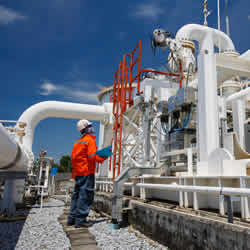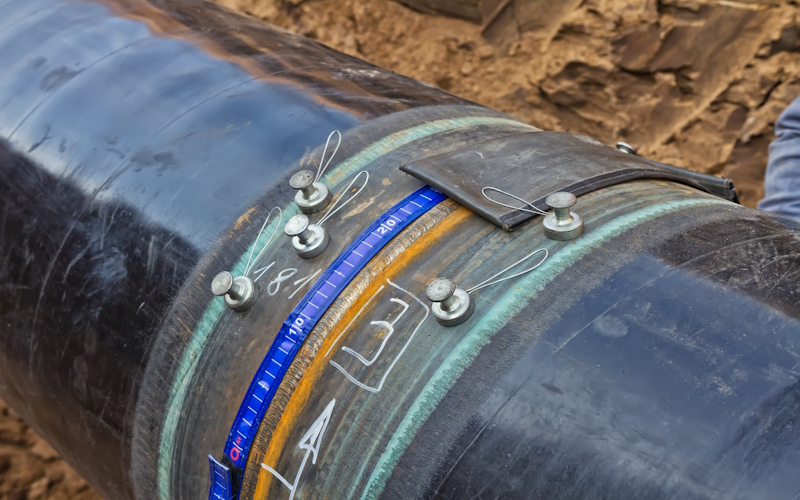Pipeline Welding Inspection: Professional Services for High-Quality Welds
Pipeline Welding Inspection: Professional Services for High-Quality Welds
Blog Article

Finest Practices for Pipe Welding Evaluation: Strategies, Criteria, and Treatments to Achieve High Quality Guarantee and Compliance
Reliable pipe welding inspection is important for guaranteeing the integrity and security of vital facilities. Comprehending the complexities included in each phase of inspection is essential to achieving compliance and reliability in pipe systems.
Relevance of Welding Examination
The honesty of bonded joints is critical in making sure the security and dependability of pipeline systems. Appropriate welding techniques and extensive examination procedures are crucial to avoid failures that can lead to tragic occurrences, environmental damages, and death. Pipeline Welding Inspection. Welding evaluation works as a safety net, identifying issues such as fractures, porosity, and incomplete combination before they rise into significant problems
Furthermore, pipe systems frequently run under high pressure and severe conditions, making the top quality of welds even extra important. Regulatory conformity is another considerable aspect, as different standards dictate the quality guarantee procedures that must be complied with in pipeline building and maintenance. Failure to abide can result in legal implications and financial losses.

The duty of welding evaluation expands beyond mere confirmation of handiwork; it encompasses the guarantee of lasting operational stability. This includes an organized method that consists of not just aesthetic evaluations however additionally advanced non-destructive screening approaches. Ultimately, efficient welding examination is an investment in the durability and security of pipe systems, guaranteeing they operate as planned while minimizing risks connected with product deficiencies.
Key Evaluation Methods

Visual inspection, commonly the initial line of protection, permits the recognition of surface area defects such as fractures, damages, and porosity. Ultrasonic testing utilizes high-frequency acoustic waves to spot inner flaws, providing a thorough evaluation of weld honesty. This non-destructive approach is particularly efficient for recognizing suspensions that might not show up externally.
Radiographic testing includes making use of X-rays or gamma rays to produce photos of the bonded joint, disclosing inner defects. This technique supplies comprehensive insights however might need customized tools and safety considerations. Lastly, magnetic bit testing works for identifying surface area and near-surface discontinuities in ferromagnetic materials, utilizing electromagnetic fields and fine iron particles.
Industry Criteria and Regulations
Compliance with sector criteria and guidelines is crucial for ensuring the top quality and safety and security of pipeline welding inspections. These criteria give a framework for best techniques in welding procedures, materials, and inspection strategies, enabling organizations to minimize issues and improve the integrity of pipe systems. Secret bodies such as the American Society of Mechanical Designers (ASME), the American Welding Society (AWS), and the International Company for Standardization next page (ISO) state guidelines that are extensively acknowledged and adopted within the sector.
In the United States, regulations from the Pipe and Hazardous Products Safety Management (PHMSA) govern the safety and security of pipeline operations, mandating strenuous evaluation methods. These requirements not just serve to protect public safety and security and the environment yet likewise ensure conformity with legal and lawful responsibilities. Adherence to the pertinent codes, such as ASME B31.3 for process piping, is crucial for maintaining functional efficiency and regulative conformity.
Additionally, continual updates and revisions to these requirements mirror technological improvements and advancing market techniques, emphasizing the requirement for companies to remain informed and train workers as necessary. Inevitably, robust conformity with well-known standards fosters depend on and integrity in pipeline infrastructure, securing both stakeholders and assets.
Efficient Assessment Treatments
Reliable evaluation treatments are crucial for determining prospective issues in pipeline welds and ensuring the overall stability of the system. A methodical strategy to evaluation encompasses several key phases, including pre-weld, in-process, and post-weld evaluations. Each phase plays an important function in preserving high quality assurance.
During pre-weld evaluation, it is important to assess the materials and joint configurations, ensuring compliance with project requirements. In-process examinations entail monitoring welding techniques and criteria, such as warmth input and take a trip speed, to avoid defects from taking place. This phase permits real-time adjustments to welding practices.
Post-weld examinations consist of non-destructive testing (NDT) techniques like radiography, ultrasonic screening, and magnetic fragment testing. These methods aid find interior and surface imperfections that can jeopardize the pipeline's capability. Paperwork of all inspection tasks is vital, offering a deducible record that supports conformity with industry criteria.
Training and certification of evaluation employees additionally enhance the performance of these procedures. By sticking to a structured inspection method, organizations can minimize dangers, ensure conformity, and ultimately supply pipelines that meet rigorous security and performance requirements.
Usual Difficulties and Solutions
Pipeline welding examination provides numerous common difficulties that can impact the high quality and safety and security of the end product. One significant difficulty is the irregularity in welding techniques and products, which can lead to inconsistent weld top quality. To address this, it is important to develop standardized procedures and training for welders, making certain an uniform method throughout tasks.

Environmental variables, consisting of temperature and moisture, can additionally affect the welding procedure, possibly leading to splits or incomplete blend. Carrying out controlled settings and adhering to pre-weld treatments redirected here can reduce these threats.
Final Thought
To conclude, the application of best methods for pipe welding evaluation is important for making certain quality control and compliance with market criteria. An extensive strategy, incorporating numerous techniques such as visual, ultrasonic, and radiographic screening, facilitates the recognition of issues throughout all stages of the welding procedure. Pipeline Welding Inspection. Adherence to developed regulations and efficient examination procedures not only boosts the reliability and security of pipe systems yet also alleviates threats connected with welding problems, consequently advertising overall operational stability
Conformity with industry requirements and guidelines is essential for guaranteeing the high quality and security of pipe welding examinations. These standards offer a framework for finest techniques in welding procedures, products, and inspection techniques, enabling companies to lessen issues and enhance the integrity of pipeline systems.In the United States, guidelines from the Pipe and Hazardous Products Security Management (PHMSA) control the safety and security of pipe procedures, mandating strenuous inspection protocols. A systematic approach to examination includes a number of vital stages, including pre-weld, in-process, and post-weld inspections.In final thought, the execution of best methods for pipeline welding examination is necessary for making certain quality guarantee and compliance with market criteria.
Report this page